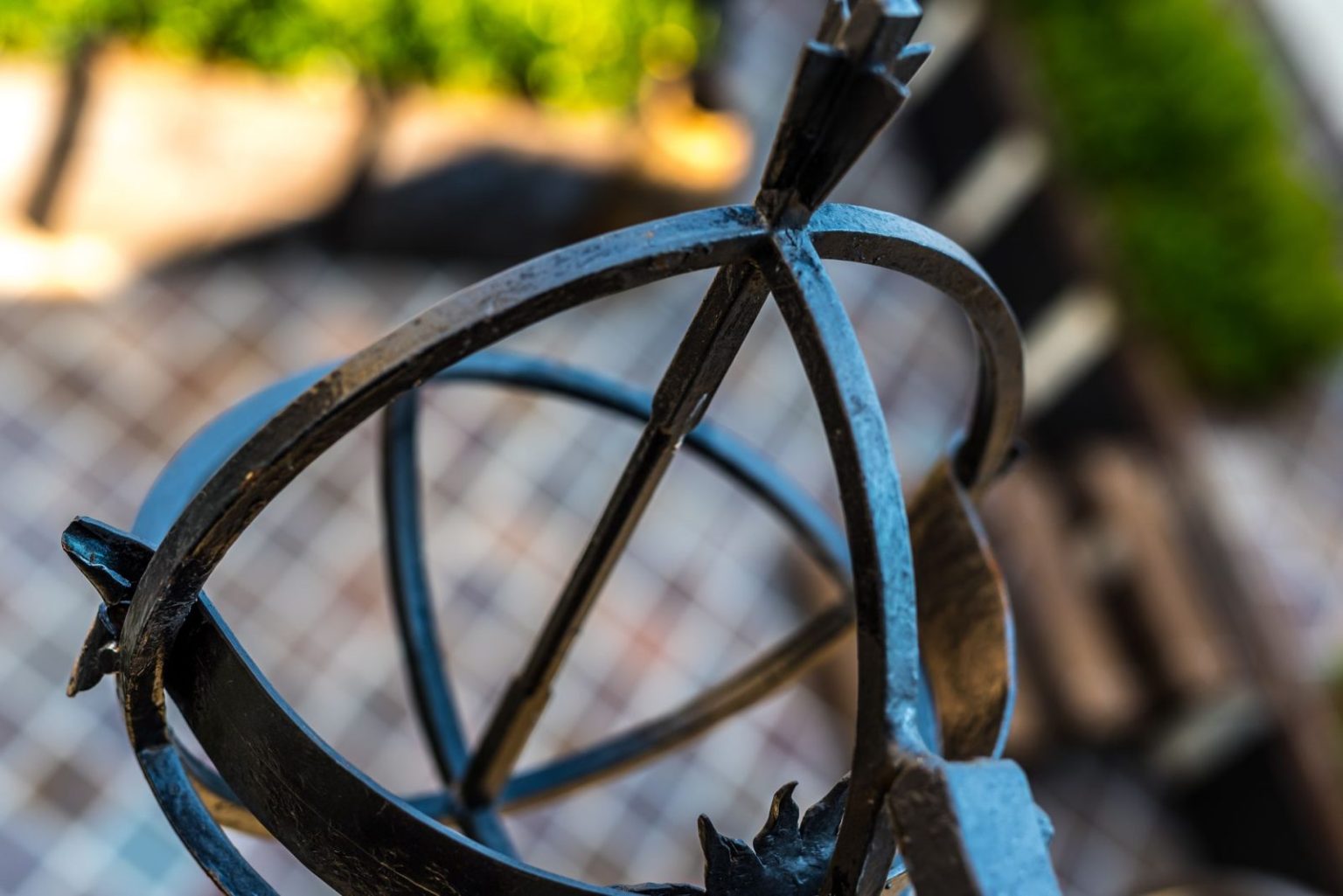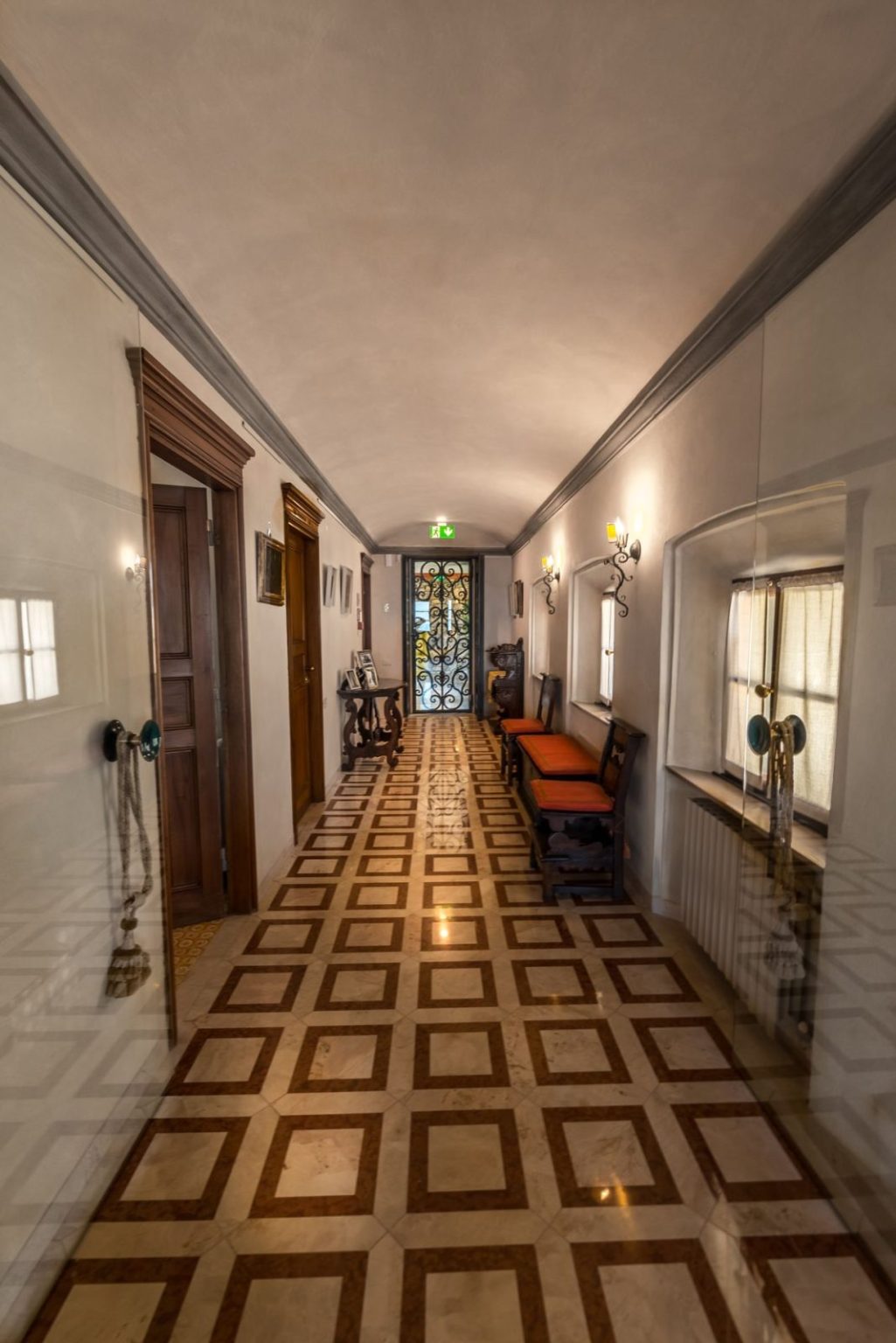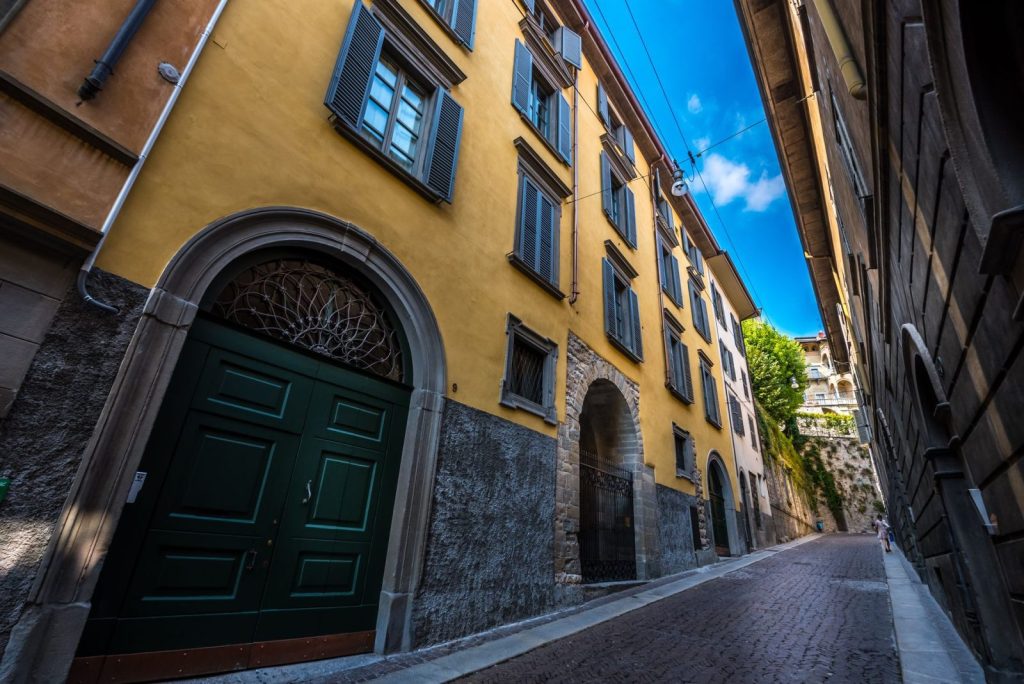The Palace
The Palace, built in 1500, designed by Pietro Isabello (~1484-1549) renovated in 1700.
Known as Casa Alborghetti it was purchased by Vittorio Polli in the year 1960 to use it as his and his wife Anna Maria Stoppanis main residence.
In the year 1962, on the design of architect Sandro Angelini, it underwent a renovation that enhanced its unique features, such as being leaning directly on the rock of Citta Alta, while making it habitable in the state in which it remained until the disappearance of its owners.

The front is four stories above ground;
At the ground there is a fountain under a large stone archivolt, which is matched, towards the left, by the hallway. From this one passes to the courtyard, hanging ( at least in relation to the street ) by means of an unusual Z shaped staircase.
It deserves to be emphasised that such conquest of the courtyard space, coming from below, its exciting in itself, but once you get to the elevation of this one, you will not find it hard to recognise it as one of the best of the large series of Renaissance courtyards that the city possesses.
[Giacomo C.Bascape’ and Carlo Perogalli,1964, Banco Ambrosiano, Palazzi Privati di Lombardia].
In the year 2009, Mrs. Anna Maria Stoppani concurrently with the establishment of the Foundation, stipulated that upon her passing, the building be designated as its headquarters.
The Foundation arranged in the year 2016 to begin work on the restoration of the building by entrusting it to Carlo Teruzzi, a member of ICOM ( International Council of Museums).
Restoration that took over a year and a half to bring the structure in the condition to be able to fulfil the purposes of the Foundation.

Restoration
The restoration began by researching the history of the palace, through an iconographic survey at the Land Registry, Municipal technical offices, and Bibliography.
The Foundation then decided the restoration should preserve the conditions of use of the spaces with the utmost respect for those originally decided by the Founders, for the realisation of which the collaboration of their nephew Francesco Gavazzeni, who lived with them, proved invaluable.
The restoration took care of not only the building, but also the wooden furniture, upholstery, tapestries, paintings and objects owned by the founders, using the best techniques, and where possible the artisans who had been responsible for its construction or maintenance on their behalf.
The restoration, while using the materials that modern technology offers to ensure the durability of the same and of the structures of the Palace, made choices that would allow for the preservation of the original aesthetic appearance, from a conservative rather than reconstructive perspective.
